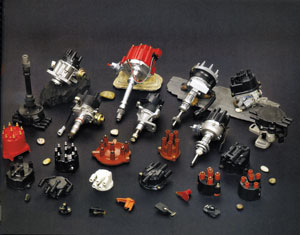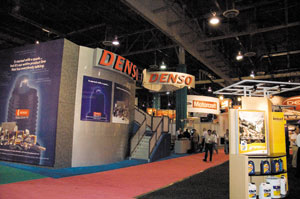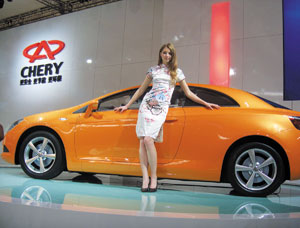Native Chinese Suppliers Gradually Rise to Original Equipment Standards
2009/04/10 | By CENSExcept key auto parts that call for sophisticated technologies, machinery and tight tolerances, native Chinese auto-parts makers have been making substantial qualitative upgrades-so now they are capable of turning out some common parts with OE (original equipment) standards for second and third-tier automakers. After years of rapid development, the OE auto-parts market in China may be summed up in the following.

With all the major automakers worldwide having set up joint ventures in China, their OE auto-parts suppliers have also followed suit, including Delphi, Visteon, Bosch, and Denso. The foreign-invested auto-parts firms, either as joint ventures, holding firms, or fully-owned ventures, number nearly 500.
Foreign-invested auto-parts enterprises dominate the OE auto parts market in China, especially high value-added and technology-intensive parts, due to advanced management, cutting-edge technologies, high product quality, and foreign partners' dominance in procuring joint-venture auto firms.
Auto-parts in China are made and distributed along three supply-chains: the East consisting of Japanese and Korean makers, the West of European and U.S. suppliers, and indigenous or Chinese suppliers. The Japanese and Korean suppliers operate similarly, both being exclusive systems with tight links between automakers and fixed suppliers. The European and U.S. systems are more open in nature, albeit western automakers also prefer European or U.S. parts suppliers as Bosch for key parts.
Dominance by Automakers
To cut cost, automakers classify their parts suppliers into the three categories of A, B, and C, purchasing 60-70% of needed parts from A-category suppliers, 20-30% from B-category suppliers, and only 10% from C-category suppliers. While A-category suppliers usually can command prices 5% higher than B-category suppliers for similar products, the former are at the mercy of automakers in terms of purchasing prices for automakers can always opt to procure from category-B or C suppliers. Such strategy has especially serious impact on the cases of agricultural vehicles, lightweight passenger cars and trucks, mini-passenger cars and trucks, and mini-sedans, most likely because such vehicles contain less technology-intensive parts that can be sourced from either of three categories of suppliers.

Native Chinese suppliers still trail their foreign counterparts in production scale, capitalization, and technology. Therefore, foreign joint ventures or fully-owned foreign enterprises still dominate the OE auto-parts market for sedans, especially medium and high-end sedans, although the local-content rates for some models have reached 80% or even 90%. While foreign suppliers virtually monopolize-commanding over 95% share of the auto electronics and engine parts markets-local Chinese suppliers are relegated to focus on the niche markets of commercial and passenger cars, forsaken by foreign suppliers due to their limited capacities and low profits.

To cut product cost, first-tier suppliers often outsource production of most auto parts, except key parts and those involving proprietary technologies, offering opportunities of tech transfer and development to local Chinese suppliers. Meanwhile, the imposition of higher tariffs on imported K/D (knockdown) parts also creates business opportunities for indigenous suppliers by discouraging import. As foreign joint-venture automakers, such as Mercedes and BMW, strive to meet the minimum local content rate of 40%, local Chinese parts suppliers are capitalizing on such precious opportunities to supply such OE parts by upgrading technological levels, which helps to gradually narrow the lead commanded by global players as Bosch and Denso.
Various factors work in favor of the further growth of the auto parts sector in China, despite the global downturn, especially when teeming numbers of Chinese aspire to car ownership, with insiders predicting double-digit growth in car sales in the major cities for the next few years, as well as steady growth for the next 20 years. Such promising forecasts place the Chinese auto and auto-parts sectors in excellent positions. China's auto output is expected to hit 15 million units annually in the next several years, more than doubling the size of the OE auto-parts market.




